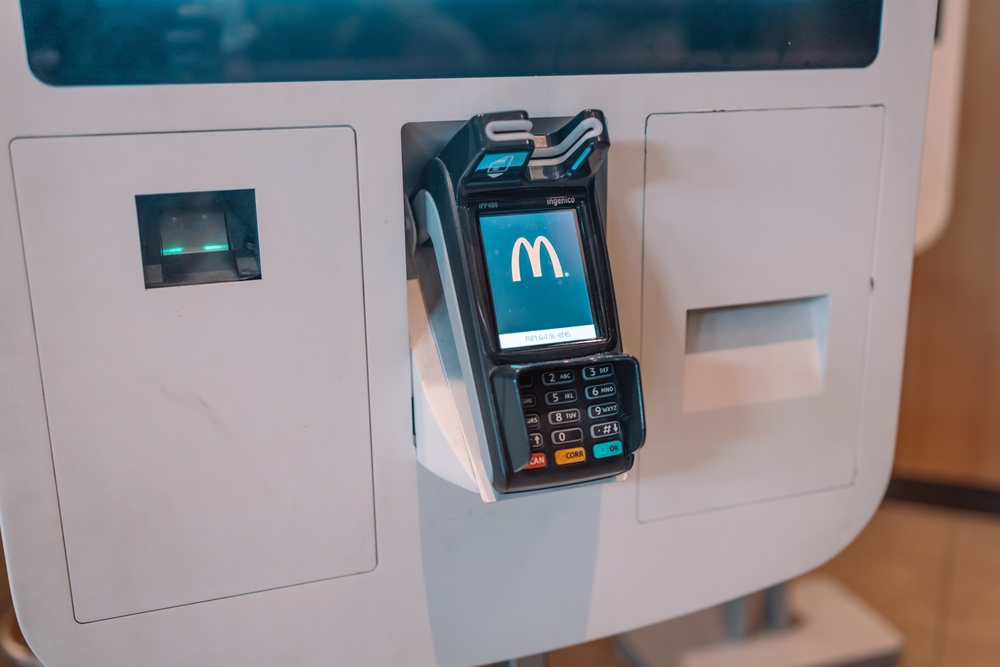In our last post, we started to explore the diversity in kiosk use cases across retail. Under the umbrella term ‘unattended retail’, kiosk technology has become a driving force in retail innovation, delivering choice and convenience to shoppers through self-service, and helping retail businesses find flexible new ways to sell while cutting costs.
In our first post, we looked at the original kiosk-based ‘unattended retail’ solution, self-service checkouts, while also exploring the role kiosk technology plays in the futuristic checkout-free model most famously pioneered by Amazon Go stores.
In this second post, we’ll look at two more examples of unattended retail – interactive stores and smart vending machines, along with their close siblings’ micro markets.
Interactive stores
Interactive stores come at the concept of ‘unattended’ retail from a different angle to self-service checkout. Rather than finding ways to smooth the transaction process for physical goods, in an interactive store it is the products themselves that are spirited away into the digital ether.
Kiosks – in some cases, full-length touchscreen ‘connected displays’ for added visual impact – become the gateway to digitised browsing. You can think of it as bringing e-commerce into the realm of physical retail.
One benefit for vendors is the reduction in rental overheads. A relatively small store with select merchandising on display can nonetheless have an ‘infinite aisle’ with a much larger selection of goods available to browse digitally. When floor space is at a premium in a popular shopping centre, you could still open a compact interactive store – perhaps nothing more than a large interactive display – and still be confident of getting high footfall in a busy retail environment. This model also works well for concessions in other stores.
Other types of interactive stores might be ‘unattended’ in the physical sense, but interaction between customers and sales personnel is very much to the fore. It just takes place virtually, via video link through a kiosk screen. This is being explored by service-oriented sectors like mobile and banking, where direct customer interaction in a dedicated physical space adds value, but operating out of large premises can’t be justified in terms of costs. Again, these types of interactive stores can be very small, perhaps no more than a booth.
Micro Markets and Smart Vending Machines
The fourth model of kiosk-powered unattended retail is the latest iteration of the vending machine. You could say that vending machines were the original unattended retail solution. But today’s versions, powered by technologies such as touchscreen interfaces, ‘smart’ IoT connectivity, AI and more, are providing a broader range of products with higher levels of service than ever before.
Still dominated by food and beverages, some vending solutions are crossing over into hospitality/QSR territory by using sensor-controlled grills and ovens to serve up hot food like pizzas cooked on demand. Or premium quality barista-style coffee and other hot drinks. Others, dubbed ‘micro markets’, are offering expanded ranges of products in the mould of convenience stores, with differentiated ambient chillers plus made-to-order hot drinks and snacks sections all bundled into the same unit.
As with interactive stores, the big benefit of these expanded vending machine options is reduced need for retail real estate. Because of their compact size, they are extremely flexible, increasing opportunities for where goods can be sold.
In summary, unattended retail is expected to continue to grow rapidly in the coming years. For consumers, increased self-service options across the retail landscape tap into people’s desire for convenience and autonomy when they shop, as well as boost options for how and where they buy.
For retail businesses, kiosk-based solutions are helping to simultaneously reduce costs and increase revenue. While unattended retail options can help to make more efficient use of space or even significantly cut rental overheads, factors like increased customer throughput, 24/7 vending and flexible location options all offer opportunities to boost sales volumes.




